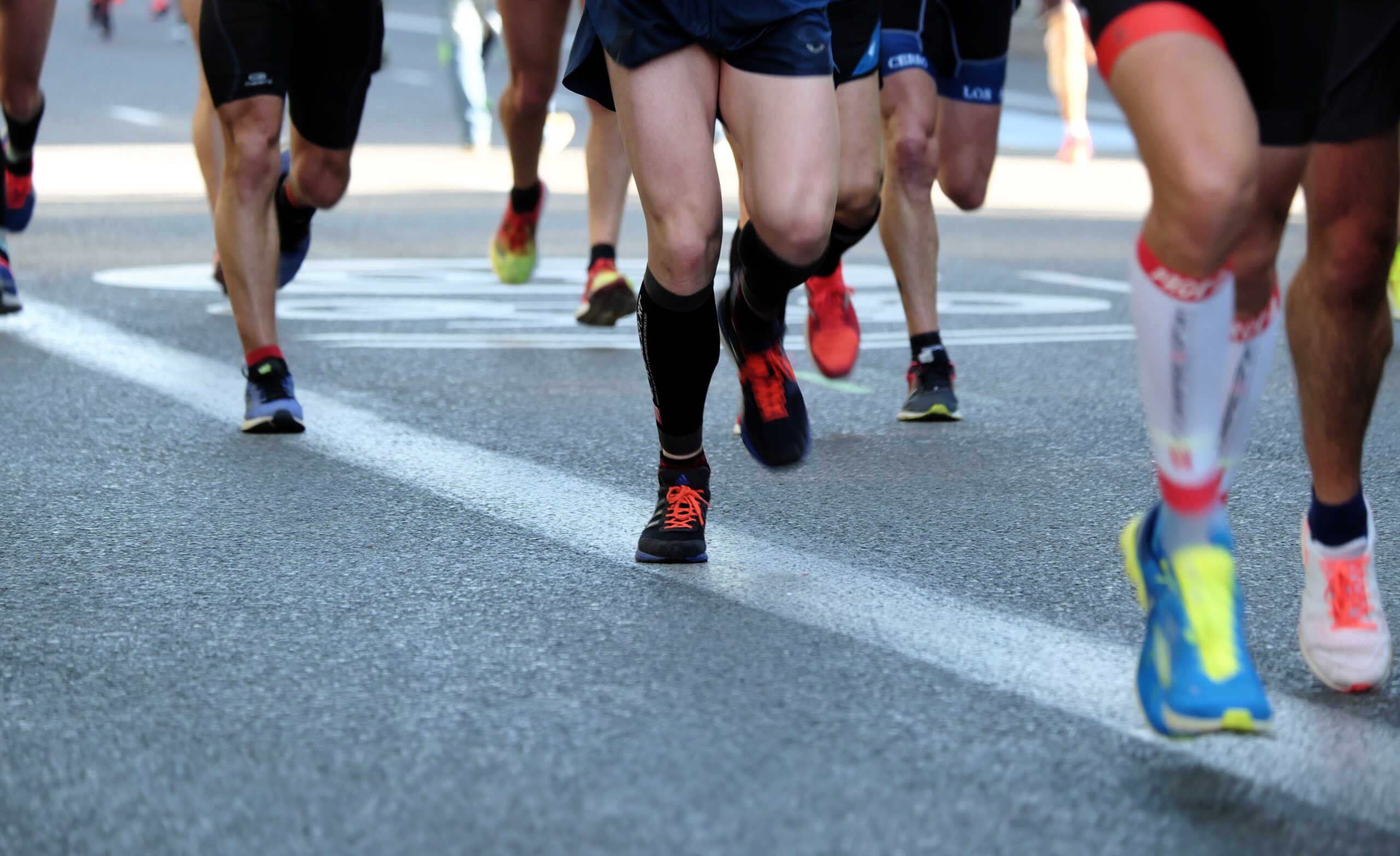Running has become a very popular pastime lately with the growing popularity of the parkrun and city marathons etc. Running is accessible because it requires no facilities or complex equipment. It is also something that requires very little technical training. If you are healthy you will generally be able to run, although you may be slow.
As running is weight bearing it is generally more hard wearing than other activities. Joints will feel the effects of a long run especially for those who are untrained or a little overweight. With this in mind it is something which should be managed with care. An individual must be conscious of over-load and effort, and be careful not to do too much too fast.
As people get into running and start doing timed events, the emphasis on speed increases. Many will train to improve their time and seeing regular progress becomes addictive. This is a productive addiction and one which promotes health so we encourage those to continue and use progress as motivation.
Run training can be counterintuitive. The obvious way to improve is to try to run faster as you become fitter. This is often true for the beginner but quickly becomes problematic. We have discussed the advantages of low intensity running in a previous article and how it can improve running technique and efficiency.
The wonders of low intensity running.
If an individual continues to run hard at every session they run a number of risks
1. Injury
High intensity efforts put more stress on the muscles, ligaments and joints. Doing so repeatedly can eventually cause a lot of wear and tear. In addition, if one was still recovering from a previous session then they run the risk of poor technique as a result of fatigue. The integrity of the muscles may still be compromised and strains can be very common.
2. Becoming Anaerobic
This is extremely common in more experienced runners who may not have a coach organizing their training. Constantly running at high effort will utilize our anaerobic system. This system becomes overdeveloped and favoured during our runs. It is much less efficient at supplying energy. If we train short hard efforts then we will train the wrong system for our longer races. This is common for marathoners who may have a high run frequency. They lose fuel efficiency by working at too high effort in training and this may only show its detriment on race day.
3. Poor Pacing
Training fast may be beneficial for teaching leg speed, but it may not help us run efficiently at race pace. Those who often train fast don’t learn how to run sustainably over time. Longer races produce tired legs. Learning to run efficiently and with good technique while tired is very important. This is something that is hard to achieve doing shorter faster runs.
Why slow down?
Slowing down allows your body to utilize the aerobic system. Building a strong aerobic system is essential for efficiency over longer duration. It also helps support faster races by allowing you to stay aerobic for longer. This helps fuel efficiency and economy of effort. This allows you sustain more speed for longer. In addition, if you can stay aerobic, the toll it takes on the body is reduced and so recovery time is shortened between training sessions.
If you run, do not be fooled into thinking you need to run fast. Very seldom does running at a slower, more comfortable pace cost your improvements. The progress is made when your body is coping with the effort. More time at an aerobic intensity is extremely beneficial at improving your aerobic capacity. It should make up the majority of your training. The good news is that this training is a lot more comfortable and mentally easier to complete. The bad news is it requires restraint and confidence that it is going to yield results.
The first thing people can do to help the issue is to stop training using pace as an intensity control. A headwind or tailwind throws any consistency to this out of the window. Any latent fatigue, dehydration or even emotional stress can also impact our physical state and make an easy run a much harder one in terms of pace. Using a heart rate monitor is a much better tool for showing what sort of stress is on your body. You can easily slow down to reduce intensity on a day where fatigue may make a certain pace a bit too much for you.

Individuals should take some time to look at their training and ensure that how they categorize their intensity is a true reflection of their abilities. They must then ensure that the majority of their training is aerobic. This often means they will train at a much slower pace than they can race at. Keep in mind that often your top end pace is significantly higher than your sustainable pace. This tells you that speed is not a key limiter. Athletes like to try run faster more than they want to be able to hold a submaximal pace for a longer duration. The latter is more applicable to a race situation. Endurance is often more of a determining factor than speed during a race.


1 Comment
Join the discussion and tell us your opinion.
[…] Run slow to run fast […]